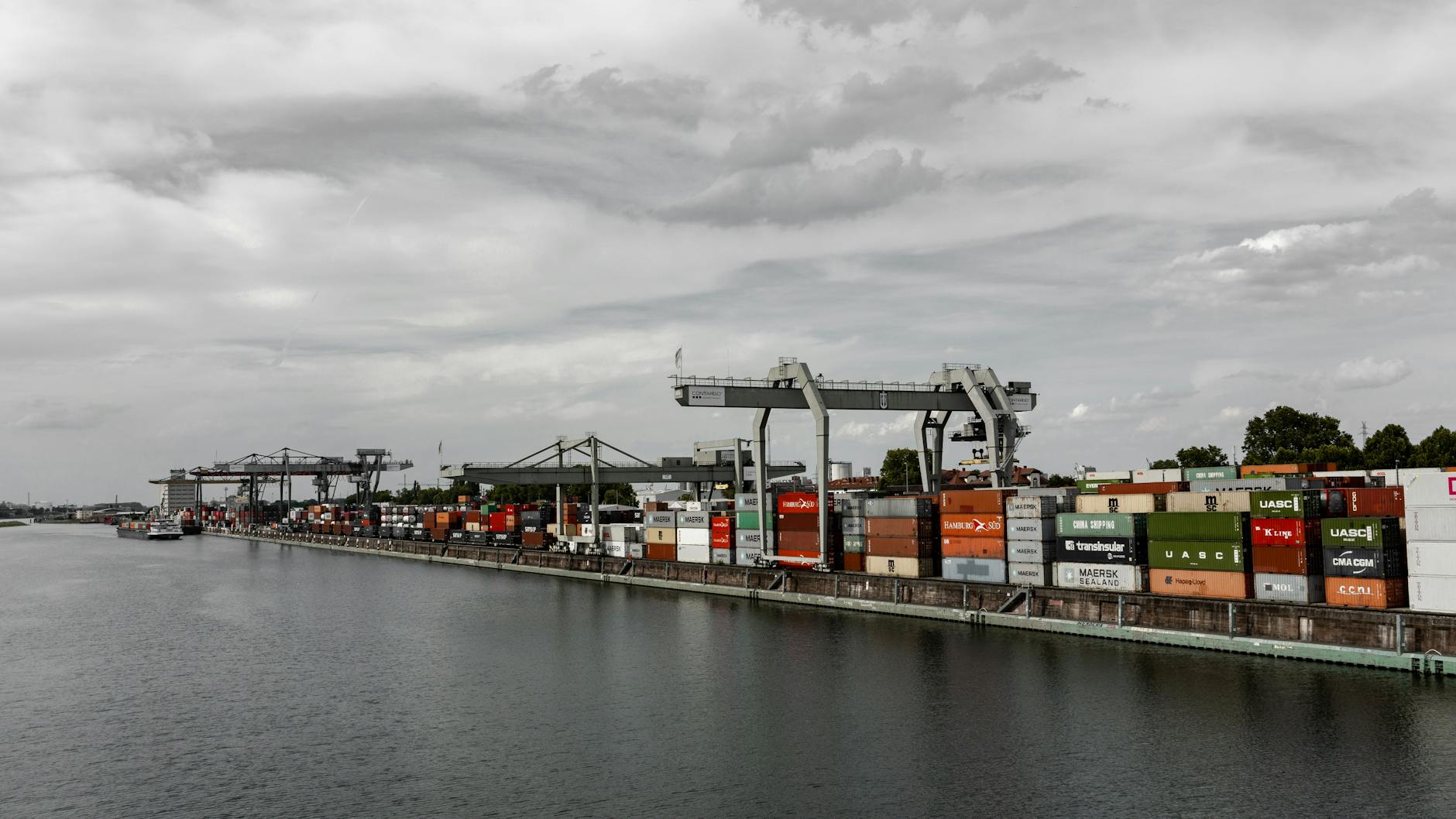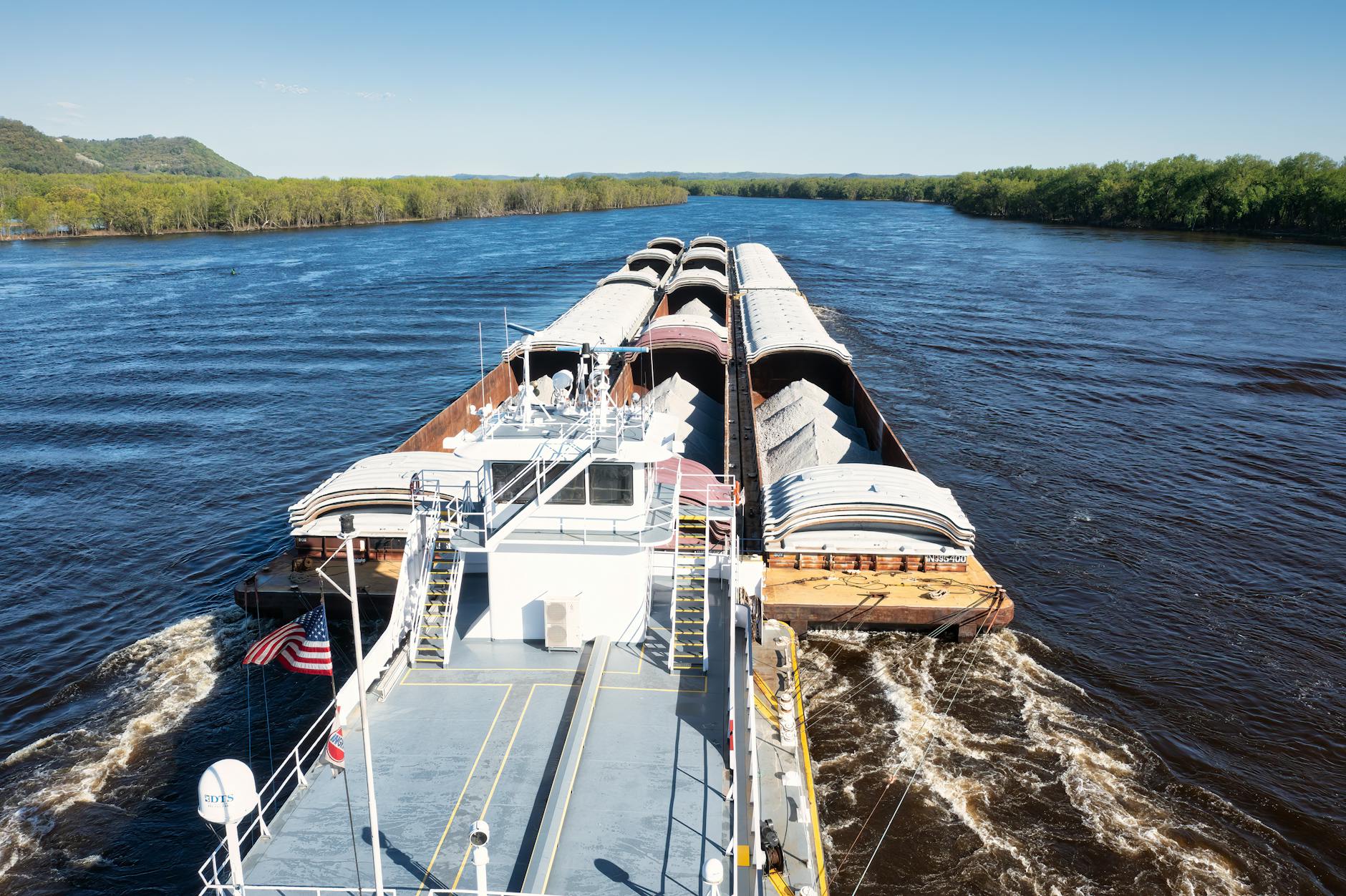What Makes Australia's Logistics Scene a Crucial Asset for Infrastructure Projects

Australia's Logistics Landscape
Australia’s logistics scene boasts a diverse and well-connected network that serves as a backbone for infrastructure growth. With a focus on seamless integration and connectivity, the country’s logistic landscape is designed to meet the unique demands of its geography. Notably, key areas like the bustling Barangaroo construction sites in Sydney act as vital nodes in this network, driving efficiency and supporting major projects across the region.
Diverse Networks and Connectivity
Australia’s logistics framework includes an extensive web of road, rail, air, and sea routes, ensuring goods move efficiently across vast distances. This interconnectedness strengthens 3pl logistics, enabling companies to offer flexible and scalable solutions for businesses. By leveraging these networks, companies can adapt to changing demands, facilitating seamless distribution and reducing delays.
Key Hubs and Corridors
Significant transport corridors, such as the Eastern seaboard linking Sydney, Melbourne, and Brisbane, serve as vital arteries for freight movement. These hubs are essential for coordinating logistics operations smoothly, allowing a 3pl provider to efficiently manage order fulfillment. As developments like the Sydney Metro project continue to progress, the efficiency of these corridors is likely to improve further, offering robust support for growing businesses.
Innovations in Transportation
Innovative technologies and strategies are continually being implemented to enhance Australia's logistics capabilities. These advancements, from automation in warehousing to data-driven route optimization, are designed to improve efficiencies and sustainability. The integration of digital solutions ensures that companies can maintain high standards of service while minimizing environmental impact, fostering a future-ready logistics sector.
Logistics' Role in Infrastructure Development
Facilitating Project Logistics
When planning infrastructure projects like the Sydney Metro, a well-orchestrated logistics strategy becomes vital. Managing materials efficiently involves a blend of resourceful planning and execution. For instance, warehouses, such as those within 3pl warehouse networks, provide flexible solutions for storing materials close to construction sites, significantly cutting down transportation time to ongoing projects. Strategically located facilities near Barangaroo further ensure that deliveries align with the construction schedule, maintaining project timelines.
Supply Chain Management in Action
Effective supply chain management is the backbone of large-scale developments. Systems like warehousing sydney ease operations by offering vital inventory management insight. Integrating real-time tracking systems enhances the oversight of transportation logistics, granting managers the power to adapt quickly to unforeseen changes. By reinforcing these capabilities, supply networks minimize delays, ensuring materials arrive as needed while safeguarding project continuity.
Emerging Technologies in Use
Technological advancements have reshaped construction logistics, offering powerful new tools for project managers and supply chain experts. The emergence of autonomous vehicles and drone technology significantly reduces human error and streamline deliveries. Implementing cutting-edge software allows for predictive analytics, enhancing the accuracy of supply forecasting. These innovations exemplify how logistics adapts to meet the demands of Australia's infrastructure projects.
By focusing on these facets, logistics professionals enhance infrastructure development efficiency, harnessing local capabilities around pivotal sites like the Barangaroo construction zones. Each development step reinforces the logistics sector's pivotal role in supporting Australia's infrastructural ambitions and inspiring confidence in their sustainable progress.
Challenges in Australian Logistics
Geographical and Environmental Hurdles
Navigating Australia's vast and varied terrain poses significant challenges for logistics professionals. The sheer size of the country presents logistical hurdles with long-distance hauls and remote destinations. Environmental factors also play a crucial role, as unpredictable weather patterns and natural disasters can disrupt operations and delay deliveries. For instance, severe floods can cut off crucial routes, requiring swift rerouting to maintain supply chain integrity. Given the construction activities at Barangaroo and infrastructure developments at Darling Harbour, logistics strategies must adapt to these unpredictable variables to ensure projects remain on schedule and budget.
Regulatory and Policy Impacts
Regulations and policies in Australia significantly influence logistics operations. The need for compliance with strict safety and environmental standards can sometimes hinder efficiency. For small business owners exploring third party logistics, understanding how these regulations affect shipping and handling is essential. Keeping abreast of legislative developments and aligning logistics operations accordingly ensures compliance and reduces potential legal setbacks.
Workforce and Skill Shortages
Australia is experiencing a logistics workforce shortage, making it difficult to find skilled personnel to meet growing industry demands. This shortage impacts a company’s ability to maintain efficient operations, highlighting the need for investment in training and the importance of retaining skilled workers. To navigate these challenges, businesses often turn to outsourcing solutions like 3pl providers, which can bridge the gap by offering experienced staffing solutions and efficient supply chain management.
Sustainable Logistics Practices
Eco-Friendly Transportation Solutions
Incorporating eco-friendly transportation solutions is crucial for reducing carbon footprints in Australia's logistics industry. By integrating hybrid and electric vehicles into delivery fleets, companies can significantly cut order fulfilment emissions. Additionally, optimising route planning with advanced software can minimise driving distances and fuel consumption. It's essential to consider investments in biofuel technologies and rail transport, which offer cleaner alternatives to traditional freight options.
Energy Efficient Warehousing Practices
Energy-efficient warehousing is becoming a priority in logistics. Warehouse facilities can implement solar panels to lessen reliance on non-renewable energy sources, achieving significant cost savings in the long run. Introducing energy-efficient lighting and HVAC systems also plays a vital role in reducing overall energy consumption. Another effective measure is adopting automated pick packing technologies, which improve accuracy and reduce human error, ultimately leading to better resource scheduling and energy use.
Waste Reduction and Recycling Programs
Emphasising waste reduction through robust recycling programs is another critical aspect of sustainable logistics. Many logistics providers are turning to biodegradable packaging materials to minimise landfill waste. Implementing reuse schemes, where feasible, can further reduce packaging waste. Moreover, by setting up comprehensive recycling stations at distribution centres, logistics firms can foster a zero-waste goal, ensuring all waste is sorted and processed appropriately.
As these sustainable practices become widespread, they will undoubtedly shape a greener logistics landscape in Australia, contributing positively to overall infrastructure development and the environmental health of the region.
Cost-Effective Strategies for Logistics in Infrastructure Projects
Implement Strategic Partnerships
In an ever-evolving landscape like Australia's, forming strategic partnerships is essential to stay competitive and cost-efficient. Collaborating with local experts, particularly those with insight into the Barangaroo construction sites or Sydney Metro project offices, can deliver inside knowledge and expedited services. Using such transport companies Melbourne can help facilitate smoother operations and deeper penetration into specific areas by maximizing shared infrastructure and resources.
Prioritize Integrated Technology Solutions
Leveraging emerging technologies is not just beneficial but necessary to optimize logistics in the Australian infrastructure sector. Implementing comprehensive transport software systems allows for real-time data analysis, helping to avoid the common pitfall of ignoring valuable insights into traffic management and route optimisation. Better data means better outcomes, something that becomes crucial when coordinating large-scale initiatives like infrastructure developments near Darling Harbour.
Focus on Eco-friendly Practices
Logistics professionals must rise to the challenge of implementing sustainable solutions given the environmental focus in Australia. Emphasizing eco-friendly practices will not only reduce emissions but also align transport companies Melbourne with local regulatory standards. Consider integrating eco-efficient materials in warehousing and using electric or hybrid fleets to reduce carbon footprints.
Risk Management Processes
A robust risk management process is crucial to any logistics strategy. Assessing the unique factors in the Australian landscape—ranging from Sydney's busy urban corridors to sprawling rural expanses—requires detailed risk evaluations to anticipate challenges. Foresight in these areas ensures logistical plans remain adaptable and resilient.
Customised Training Programs
Address workforce shortages through targeted, skilled training programs tailored to the logistics sector. Offering programs at Sydney-specific sites like the Metro project or Barangaroo development could attract local talent and provide essential competencies, contributing to a well-rounded, capable team ready to tackle complex projects.


